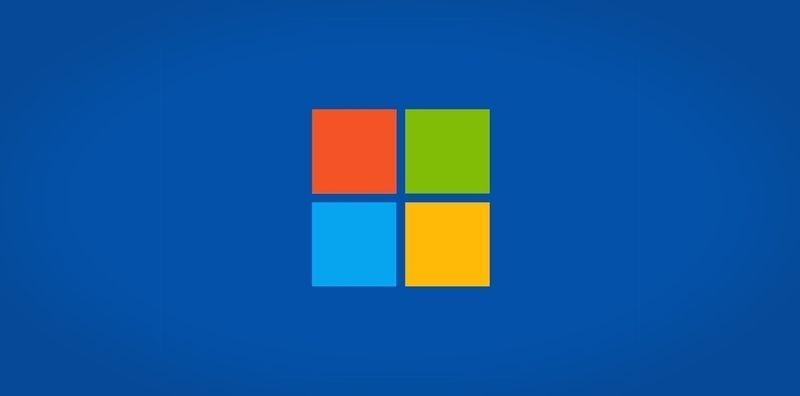Every one of us has experienced frustration when slow internet speed interrupts our tasks and lags us behind in our schedule. The flow of the process is essential for productivity. After all, time is a valuable asset. Often users complain about slow Internet speed on Windows. You can improve your Internet speed to a good extent by tweaking Windows. So here are our top tips to increase internet speed on Windows.
Table of Contents
Check/Optimize your Internet Speed
Speedtest your internet connection
Visit https://www.speedtest.net/ and take a speed test and see if you are getting speed as per your Internet service provider’s plan or if there’s anything wrong.
Check and close Apps Using Too Much Bandwidth on the Task Manager
- Press Ctrl+Shift+Esc to open the Task Manager.
- Go to the “Performance” Tab.
- At the bottom locate “Open Resource Monitor” and click on it.

- On the “Network” tab look for an app using high bandwidth.
- Right-click on the app and then click on “End Process“.

How to increase LAN speed from 100mbps to 1gbps on Windows 10?
If you are using an old system then mostly your LAN ports are limited to 100mbps on a hardware level. Even if you purchase a Gigabit connection plan from your ISP you might not be able to enjoy maximum throughput. In order to resolve such a situation you can use an external Network card or USB network card which supports USB 3.0 for fast speeds.
So you must check whether your speed is limited on a hardware level or not.
Can I increase my WiFi Speed?
There are a few ways you can increase your WiFi Speed
- Correct the placement of your router. Look for any blockage and place your router in an open space, the correct placement will real-time difference.
- Restart your router, It will create clear glitches and give a fresh start to the router’s memory.
- Connect WiFi to the “5 GHz band”, it has better speeds compared to “2.4 Ghz “but a shorter range. Check whether your has a “5 GHz Band”.
- Update Router’s Firmware.
- One simple solution is to Use an Ethernet Cable.
Can Windows 10 Limit Internet Speed?
Yes, Windows reserves about 20% of your bandwidth. you can entirely disable the reserve.
- Open the Windows Run by pressing the “Windows+R” keys.
- Type “gpedit.msc” without quotation and it will open the “Group Policy Editor”.

- Go to the following location: Computer Configuration> Administrative Templates> Network > QoS Packet Scheduler.

- Double-click on the Limit reservable bandwidth setting and set it to Disable.

Why is my Internet Slow even when I have full bars?
This point is valid for PC Users connecting to the Internet Via Mobile hotspots.
If you are connected to the PC using a Mobile hotspot or “USB tethering” and signal bars are full, check your hotspot setting for data limitation or whether your mobile’s data-saving mode is on if it’s on then simply disable data-saving mode.
Then you need to check whether the metered connection on Windows is on or not. You can follow the steps shared here in subsequent points in order to disable Metered Connection on your Windows PC.
Why do I have a full WiFi Signal but slow Internet?
Even when you have a full WiFi Signal your Wi-Fi might be Interfering with other wireless networks around you. Destructive Interference leads to less-than-ideal network coverage and Interference leads to slow Internet.
You can go to your Router settings page and choose the appropriate Wi-Fi Channel for your area which might not interfere with other wireless networks present around you.
For this, you need to use a WiFi Scanner App, which shows you what channel your neighboring WiFi Apps are. On 2.4 GHz it’s good to switch between 6,1 or 11 channels. For 5 GHz it’s best to set it to the auto channel.
Windows Update and its Role in Slow Internet Speed
The biggest culprit of slow speed is the Windows Update. It chews a big bite of bandwidth and is a thorn in your way when you are uploading videos or watching Netflix. It is not recommended to stop the Windows Update but you can make your way around it. Here’s what you can do about it.
Pause the Windows Updates for 7 days:
Pausing the Windows Update when you are working or need an uninterrupted connection
Alternatively, you can change the active hours of Windows Update or push the date of Windows Update by going to the advanced options.
Turn off the Metered Connection
The metered connection setting will put restrictions on how much of your connection bandwidth is being used, you are better off disabling it to have fast Internet speeds.
- Open “Settings”.
- Click on “Network & Internet >Properties”.
- Toggle off the “Set as metered connection” feature.
Disable Windows Updates over metered connection
- Open “Windows settings”.
- Go to “Update & Security”.
- Click on the “Advanced options”.
- Toggle off “Download updates over metered connections”.

Turn Off Delivery Optimization to Reduce Data Usage
- Open “Windows settings”.
- Go to “Update & Security”.
- Click on the “Delivery Optimization” option.
- Toggle off “Allow downloads from other PCs”.

Turn Off Background Applications in Windows
Background apps are also bandwidth hogs like Windows Update. They are always running in the background slowing your internet speed. Here’s how to disable them.
- Open “Windows settings”.
- Click on the “Privacy”.
- Scroll down and locate “Background apps”.
- Turn off “Let apps run in the background”.

Change to a faster DNS address
DNS stands for the Domain name system. All devices communicate with one another using numbers known as IP addresses. When you open the web browser and go to a site you don’t have to type IP addresses instead you type a domain name. DNS converts domain names to IP addresses so browsers can open sites. The two best public DNS addresses are “Google DNS” and “Cloudflare DNS”.
Google’s primary DNS address is “8.8.8.8” and its secondary DNS address is “8.8.4.4“. Cloudflare’s primary DNS address is “1.1.1.1” and its secondary DNS address is “1.0.0.1“. Of the two Cloudflare is considered the best. Cloudflare is a leader in the content delivery network (CDN). CDN caches websites and serves them from the nearest server on a geographical basis which in turn increases the loading speed of the website.
Here are steps to change your DNS address :
- Go to “Windows settings“.
- Click on “Network & Internet“.
- Select “Properties” on your screen.

- Scroll down and locate the “IP setting” option and click on “Edit“

- Enter the primary DNS address in the Preferred DNS box and the secondary DNS address in the Alternative DNS box.

- Click on Save.
In case you are on an older version of Windows you can also change your adapter settings to achieve the same result.
Follow the steps below.
- Go to “Control Panel“.
- Locate “Network & Internet“.
- Click on “View network status and tasks“.

- Then click on “Ethernet” and then “Properties“. (You will require administrator permission/level access to perform this action)

- Locate “Internet Protocol Version 4 (TCP/IPv4) and then again click on “Properties“.

- Enter the primary DNS address in the “Preferred DNS box” and the secondary DNS address in the “Alternative DNS box”.

Now your DNS server is changed to Cloudflare’s DNS with improved security and faster performance.
Change your MTU Size for Better Internet Speed
This point is applicable to Windows Users who are using the Internet via WiFi.
The MTU stands for “Maximum Transfer Unit” if it’s not a proper value that your system can handle in conjunction with your router then you are bound to suffer packet loss and hence slower Internet or bad ping.
Here’s how you can fix your MTU on Windows
- Firstly Tap on the “Start Button“.

- Now search for “View Network Connections“, and click on the result to open.
- Now in the Window that opens up all your Network Adapters will be visible. There will be both LAN and Wireless options if you have more than one network adapter.
- Now right-click on your selected adapter > Now Click on “Properties“.
- A small window will open up, it will be similar to the Window below:

- Click on the button called “Configure“.

- Clicking on the Configure Button will lead to another small Window opening up, it will be your Drivers Properties page.
- Keep in mind “Jumbo Frame” shows up on some specific hardware, otherwise, it’s called a “Jumbo Packet“.
Here are screenshots for the same.
Otherwise, if you use a VPN it can also show up in settings simply as MTU Size which is set to a default of “1500” which you can modify further.
Like the screenshot below.
So guys these are all of the settings that you can change and points that you can keep in mind in order to optimize your slow Internet on a Windows System.
So guys, if you liked this post and wish to receive more tech stuff delivered daily, don’t forget to subscribe to the Inspire2Rise newsletter to obtain more timely tech news, updates, and more!

























